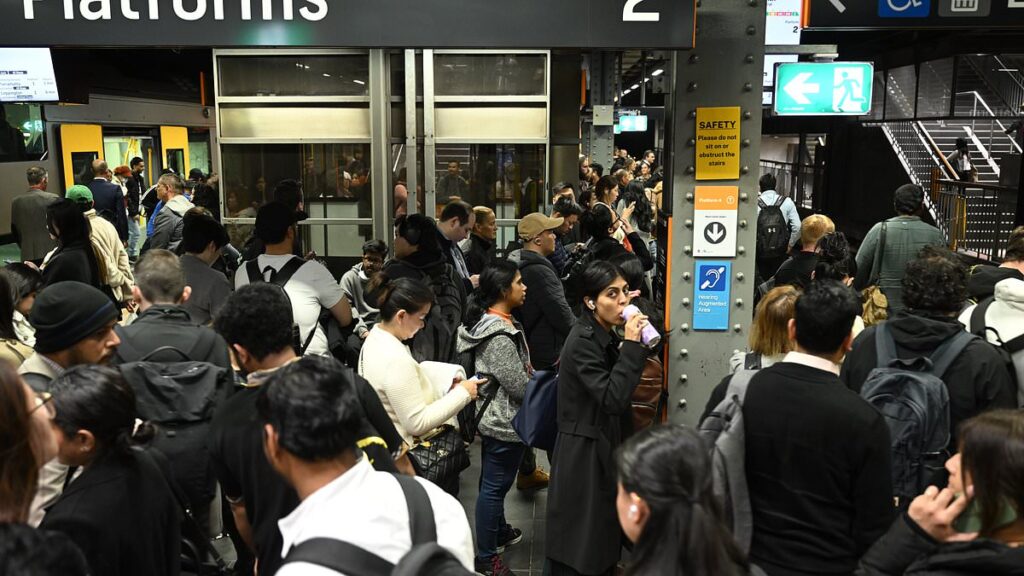- Economic output shrinking again
Australia’s economic output is shrinking again as immigration soars – threatening to revive a long-running per capita recession.
Gross domestic product per capita – or the average amount produced by every Australian – shrunk by 0.2 per cent in the March quarter, new national accounts data released on Wednesday showed.
Australia had been in a per capita recession from early 2023 until the September quarter of 2024 during a period coinciding with record-high immigration.
But GDP per capita sunk into negative territory again in the March quarter – threatening to revive another per capita recession.
Productivity was flat in the March quarter, plunging by one per cent over the year.
Weaker hourly output also potentially risks pushing up inflation as the costs of faltering output are passed on the consumers so businesses can cover wages.
Immigration levels were still high in the year to March with 437,440 people moving to Australia on a net permanent and long-term basis, with this net figure factoring in skilled migrants and international students.
Treasurer Jim Chalmers tried blaming overseas factors, as Donald Trump’s tariffs hamper global growth.
Australia’s economic output is going backwards again in a clear sign the country is less productive as immigration soars (pictured is Sydney’s Town Hall train station)
‘Today’s national accounts show that our economy continues to grow in the face of substantial economic headwinds at home and abroad,’ he said.
‘While overall growth in the Australian economy remains subdued, the private sector recovery we have planned and prepared for is gradually taking hold.
‘With all the uncertainty in the world, any growth is a decent outcome.’
Australia isn’t on the verge of a technical recession, where GDP contracts for two consecutive quarters.
But the 1.3 per cent annual growth pace is well below the long-run average of three per cent, despite Australia relying on strong population growth to drive economic activity.
Oxford Economics lead economist Ben Udy said weak economic activity could see the Reserve Bank cut interest rates again on July 8, even though June quarter inflation data isn’t due for release until the end of next month.
‘The RBA will be watching closely for further signs that the weakness in activity – if that evidence continues to rack up, the RBA may opt to cut rates again in July, a little sooner than our current forecasts suggest,’ he said.
Westpac senior economist Pat Bustamante said Australia risked having both weak economic growth and a return to high inflation.
Gross domestic product per capita – or the average amount produced by every Australian – shrunk by 0.2 per cent in the March quarter, new national accounts data released on Wednesday showed (pictured is Prime Minister Anthony Albanese)
‘This risk has been exacerbated by global uncertainties relating to US trade policy which has weighed on confidence and the willingness to invest and spend,’ he said.
‘Without a material pick-up in private demand the economy could be set for a period of subdued growth.
‘This leaves policymakers stuck between supporting growth and managing inflation risks.’
The futures market sees the Reserve Bank cutting interest rates three more times, from an existing level of 3.85 per cent, following relief in May, to 3.1 per cent by the end of 2025.
